
An All American Road Trip - Part Seven
(Yellowstone - Day Two)
The Upper Falls of the Yellowstone River

The sun finally came out on our second day in Yellowstone and it was a beautiful day. We took different loop through the Park experiencing a different part of the Park. We turned at West Thumb which was the West Thumb of Yellowstone Lake heading toward Mud Volano Trail where some hot sulfur springs are located. Yes, they smelled and probably for most they smelled too much but these springs are also part of the wonder of this magnificent park. Then we proceeded to what is called "The Grand Canyon of Yellowstone" where the Upper and Lower Falls of the Yellowstone River are found.
Since we were coming from Jackson Hole, Wyoming we covered some old territory through the Tetons and around Jackson Lake before crossing over into Yellowstone. Both are actually one continuous park joined by the John D.Rockefeller, Jr. Memorial Parkway which is maintained by the National Park Service.

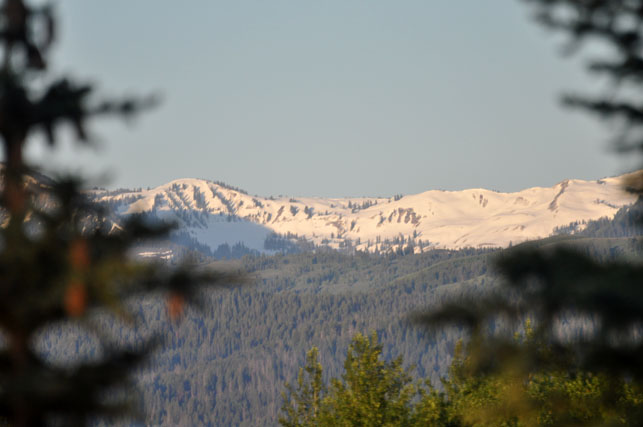
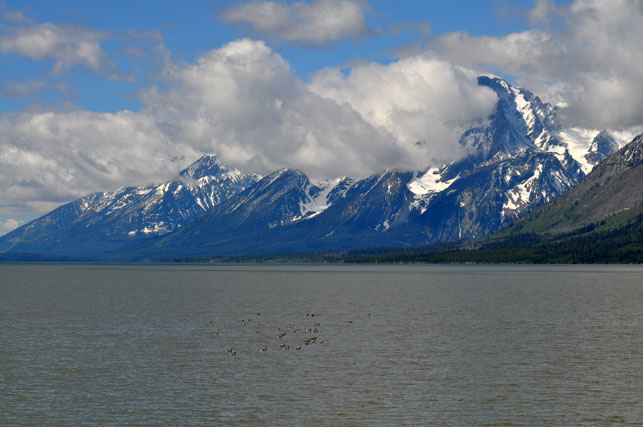
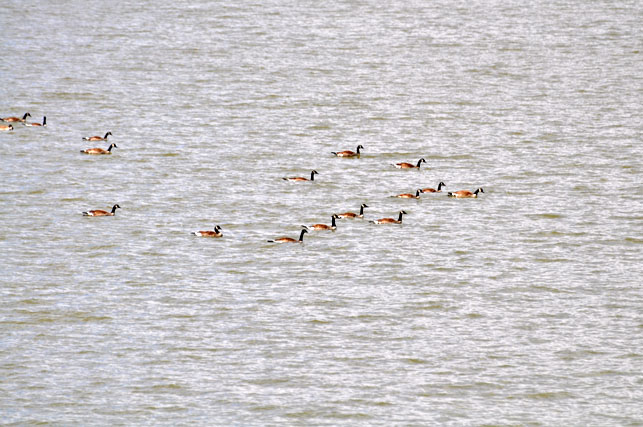
Close-up of the Ducks in Lake Jackson
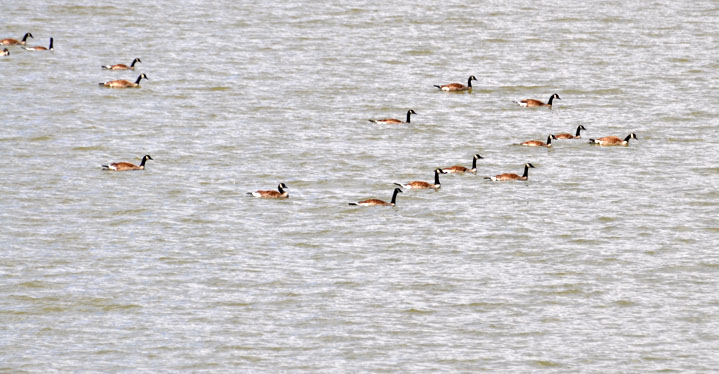
Ditto
Another View of Grand Teton and Lake Jackson
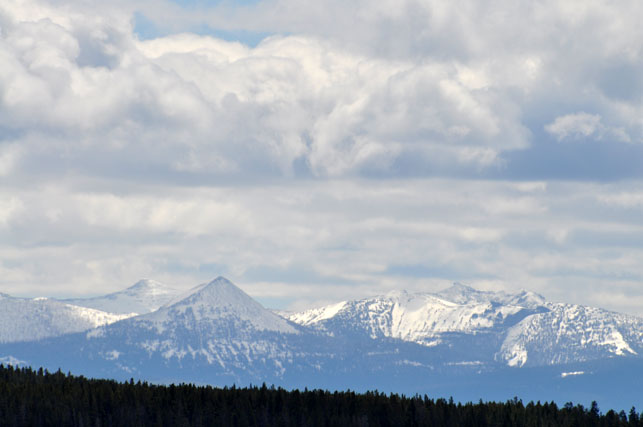
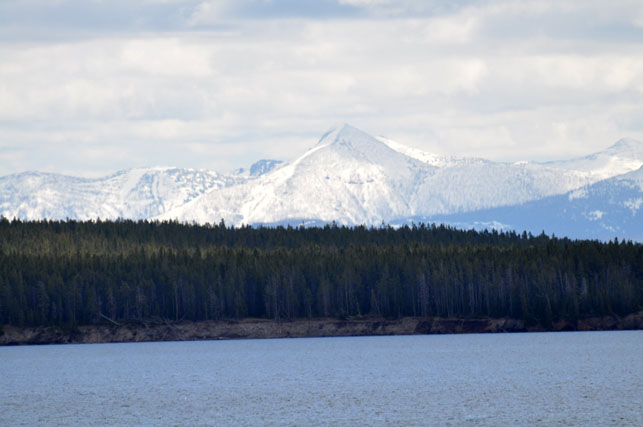

We now had entered Yellowstone and had our first encounter with an Elk.
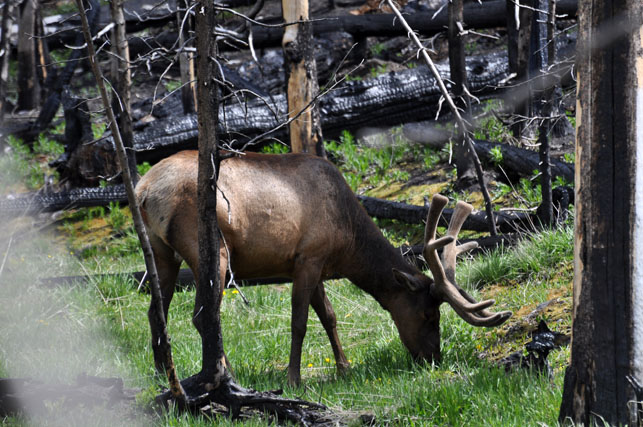
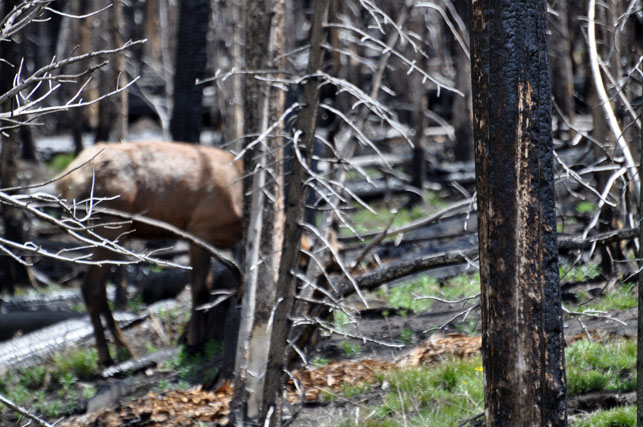
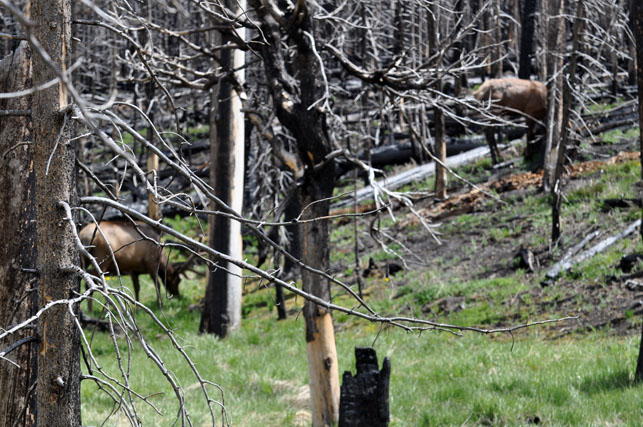

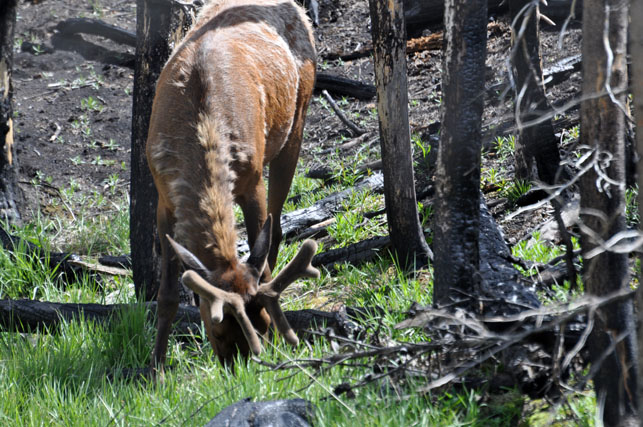
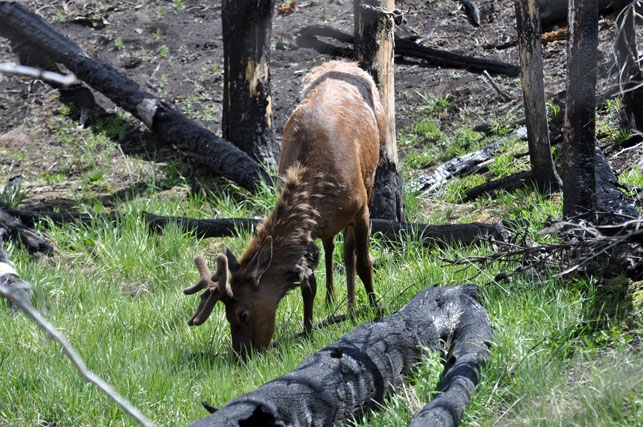
Yellowstone's "Mud Volcano"
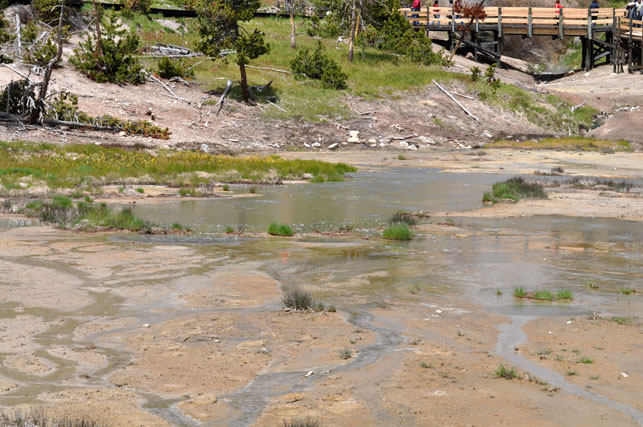
The name of Yellowstone National Park's "Mud Volcano" feature and the surrounding area is misleading; it consists of hot springs, mud pots and fumaroles, rather than a true mud volcano. Depending upon the precise definition of the term mud volcano, the Yellowstone formation could be considered a hydrothermal mud volcano cluster. The feature is much less active than in its first recorded description, although the area is quite dynamic. Yellowstone is an active geothermal area with a magma chamber near the surface, and active gases are chiefly steam, carbon dioxide, and hydrogen sulfide. However, there are some Mud Volcanoes and Mud Geysers elsewhere in Yellowstone. One, the "Vertically Gifted Cyclic Mud Pot" sometimes acts as a geyser, throwing mud up to 30 feet high.
The mud volcano in Yellowstone was previously a mound, until suddenly, it tore itself apart into the formation seen today.
Quoted From: Mud Volcano - Wikipedia
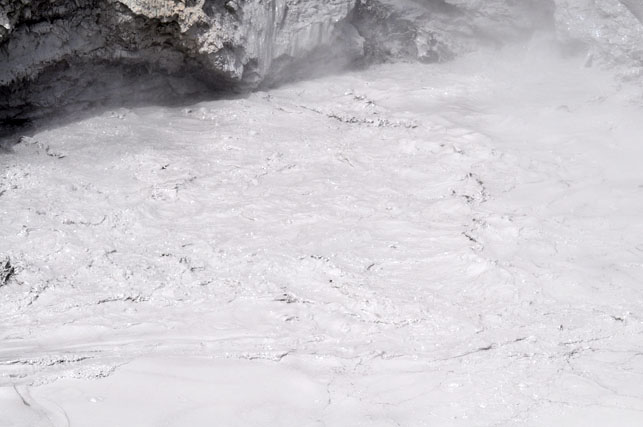
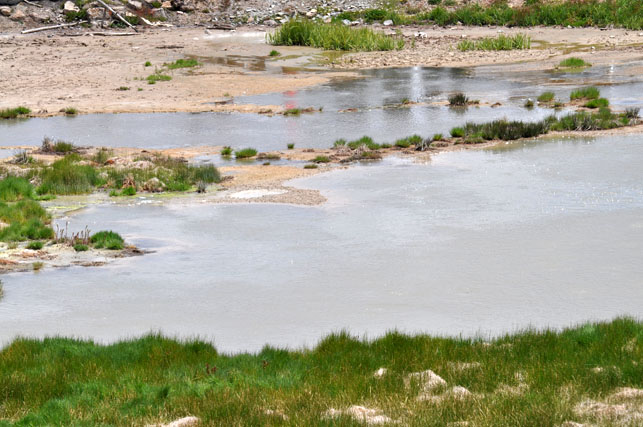

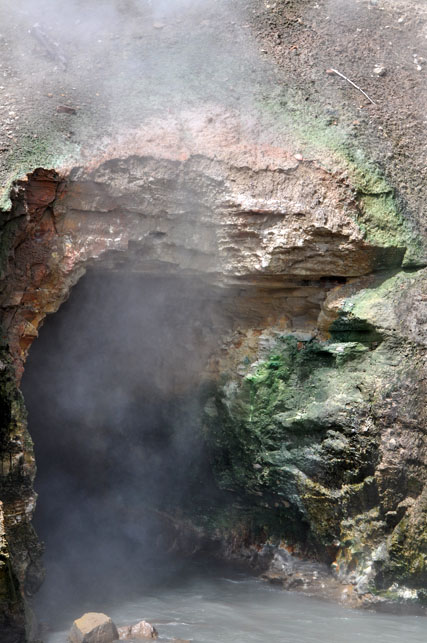
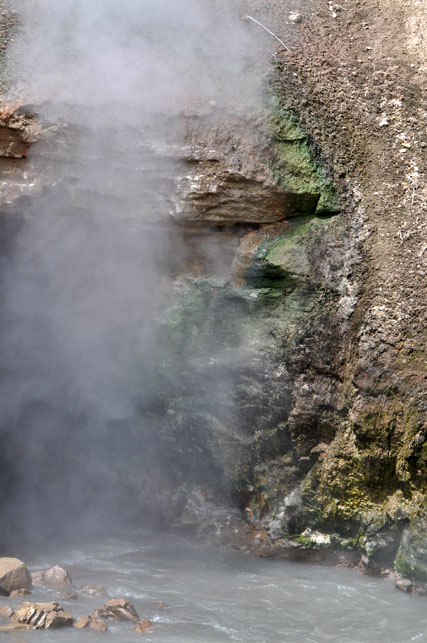
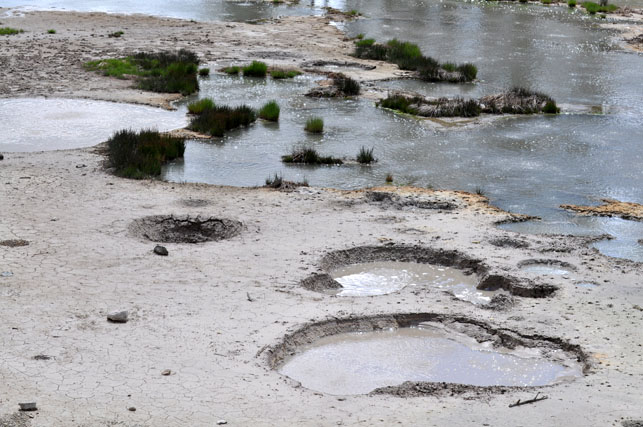
Yellowstone Geysers - Mud Volcano
Upper Falls of the Yellowstone River
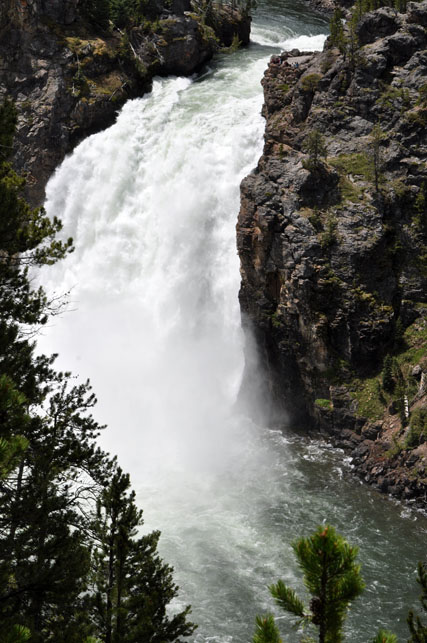
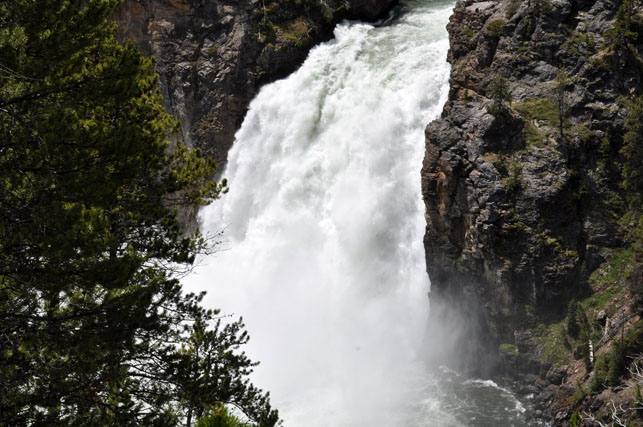
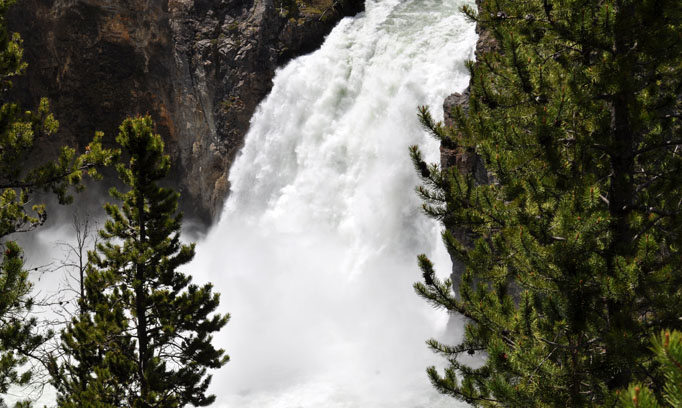
Grand Canyon of the Yellowstone
The Grand Canyon of the Yellowstone is the first large canyon on the Yellowstone River downstream from Yellowstone Falls in Yellowstone National Park. The canyon is approximately 24 miles long, between 800 feet and 1,200 feet deep and between one quarter of a mile and three quarters of a mile wide.
Although trappers and prospectors who visited the Yellowstone region had knowledge of the canyon, the first significant descriptions were publicized after the Cook-Folsom-Peterson Expedition of 1869 and the Washburn-Langford-Doane Expedition of 1870.
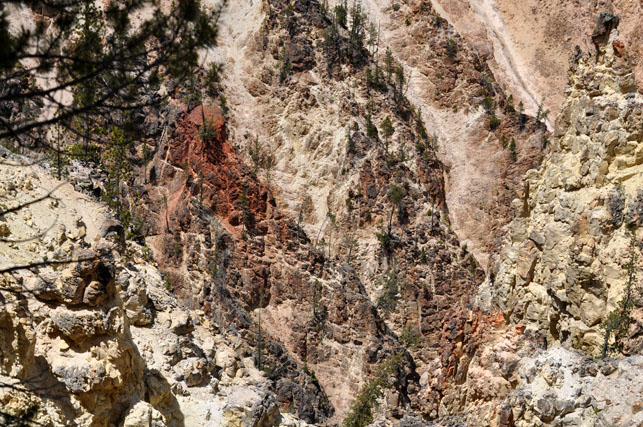

When Charles W. Cook first viewed the canyon after traveling west from the Lamar Valley on September 20, 1869 he subsequently wrote these words in his journal:
"I was riding ahead, the two pack animals following, and then Mr. Folsom and Mr. Peterson on their saddle horses. I remembered seeing what appeared to be an opening in the forest ahead, which I presumed to be a park, or open country. While my attention was attracted by the pack animals, which had stopped to eat grass, my saddle horse suddenly stopped. I turned and looked forward from the brink of the great canyon, at a point just across from what is now called Inspiration Point. I sat there in amazement, while my companions came up, and after that, it seemed to me that it was five minutes before anyone spoke."
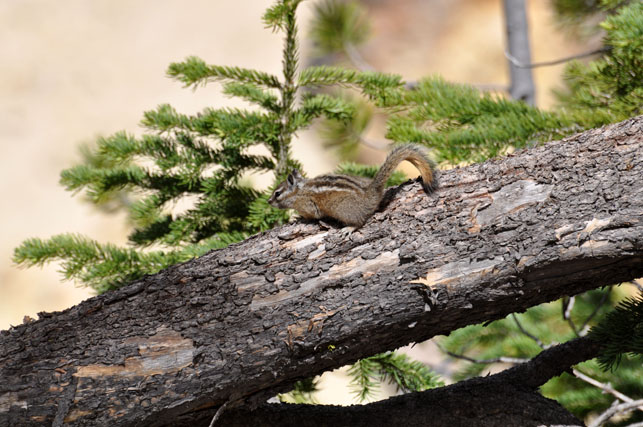
A year later during the Washburn expedition, on August 30-31, 1870, Lt. Gustavus C. Doane described the canyon with a bit more scientific detail:
"As we approached the Grand Canon a dull roaring sound warned us that the falls were near at hand. ...I had descended the canon at a point where the creek joined the river, precipitated into a gorge just above its juncture in a lovely cascade of three falls, in the aggregate 100 feet in height. This was named Crystal Cascade, and the stream Cascade Creek. In the bed of the gorge were to be found an infinite variety of volcanic specimens, quartz, feldspar, mica, granites, lavas, basalts, composite crystals; in fact, everything, from asbestos to obsidian, was represented by fragments in the bed of this stream. There were also beautiful clay stone specimens, of which we afterward learned the origin. At the foot of the gorge and on the margin of the Yellowstone stood a high promontory of concretionary lava, literally filled with volcanic butternuts. Many of these were loose, and could be taken out of the rock with the hand; broken open they were invariably hollow, and lined with minute quartz crystals of various tints. This formation is rare, but occurs frequently in the great basin. From the outer point of this promontory can be seen the foot of the upper fall of the Yellowstone, and I climbed to the summit to obtain a view.
In scenic beauty, the upper cataract far excels the lower. It has life, animation, while the lower one simply follows its channel; both, however, are eclipsed, as it were, by the singular wonders of the mighty canon below. This deepens rapidly; the stream flowing over rapids continually. ...Several of the party descended into the chasm a short distance below the fall, but could not reach its foot. ... The walls of the canon are of gypsum, in some places having an incrustation of lime white as snow, from which the reflected rays of the sun produce a dazzling effect, rendering it painful to look into the gulf. In others the rock is crystalline and almost wholly sulphur, of a dark yellow color, with streaks of red, green and black, caused by the percolations of hot mineral waters, of which thousands of springs are seen, in many instances, flowing from spouts high up on the walls on either side. The combinations of metallic lusters in the coloring of the walls are truly wonderful, surpassing, doubtless, anything of the kind on the face of the globe. The ground slopes to the canon on the opposite or east side, and from it to the low valley on the west. Three miles below the fall the chasm is 1,050 feet deep. In some places masses of the rock have crumbled and slid down in a talus of loose material at the foot; in others, promontories stand out in all manner of fantastic forms, affording vistas of wonder utterly beyond the power of description. On the caps of these dizzy heights, mountain sheep and elk rest during the night. ...We had come down the ravine at least four miles, and looking upward the fearful wall appeared to reach the sky. It was about 3 o'clock p.m., and stars could be distinctly seen, so much of the sunlight was cut off from entering the chasm. Tall pines on the extreme verge appeared the height of two or three feet. The cañon, as before said, was in two benches, with a plateau on either side, about half way down. This plateau, about a hundred yards in width, looked from below like a mere shelf against the wall; the total depth was not less than 2,500 feet, and more probably 3,000. There are perhaps other canons longer and deeper than this one, but surely none combining grandeur and immensity with peculiarity of formation and profusion of volcanic or chemical phenomena."

In 1890, Bozeman resident H.F. Richardson (known as Uncle Tom) was given a permit to operate a ferry across the Yellowstone River near the site of today's Chittenden Bridge and take tourists down into the canyon below the lower falls on Uncle Tom's Trail. Although the original trail no longer exists, there is still a steep stairway down to the base of the lower falls that is called Uncle Tom's Trail.
The Chittenden Bridge
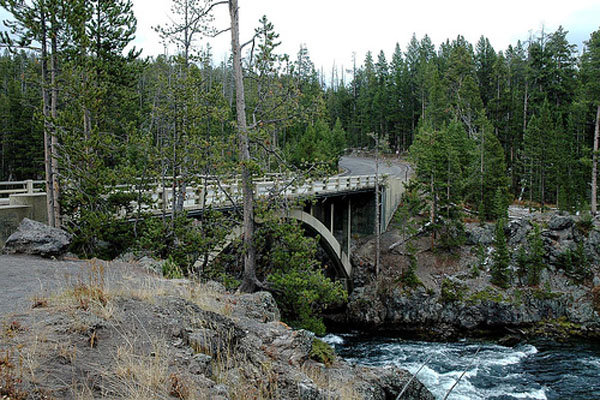
Quoted From: Grand Canyon of the Yellowstone - Wikipedia
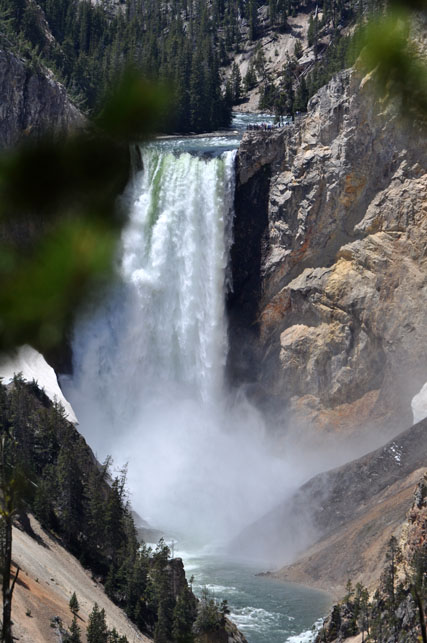


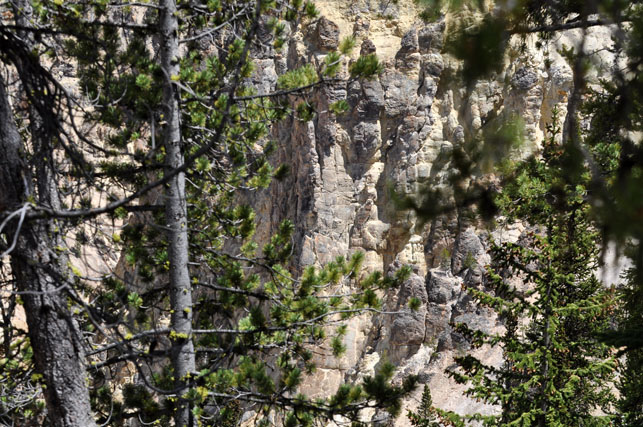
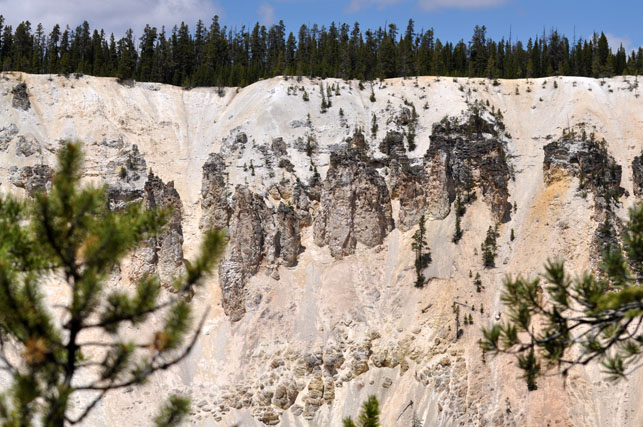

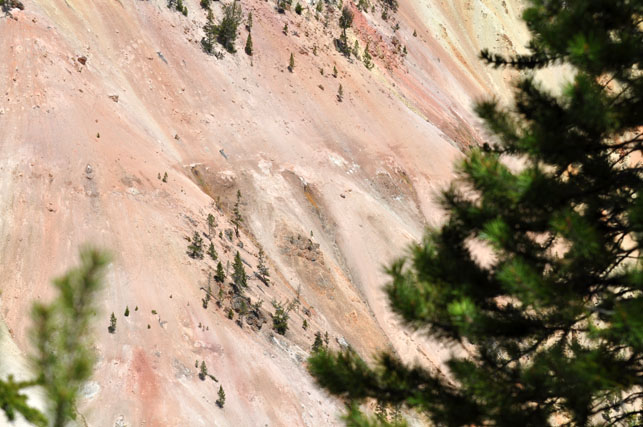

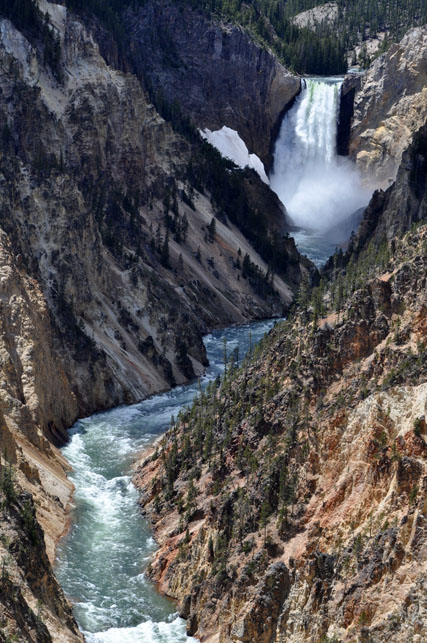
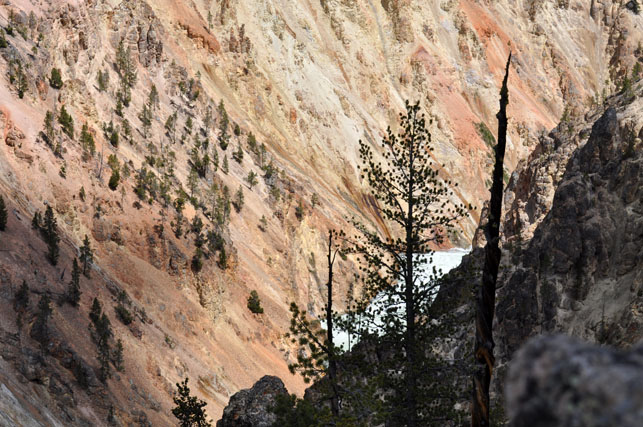
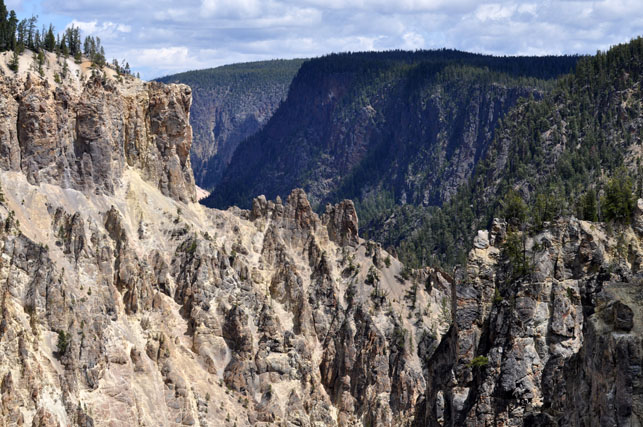
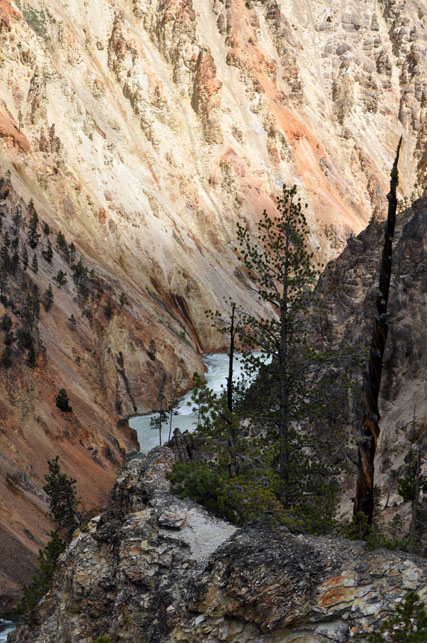

Sights on our way back to Jackson Hole.

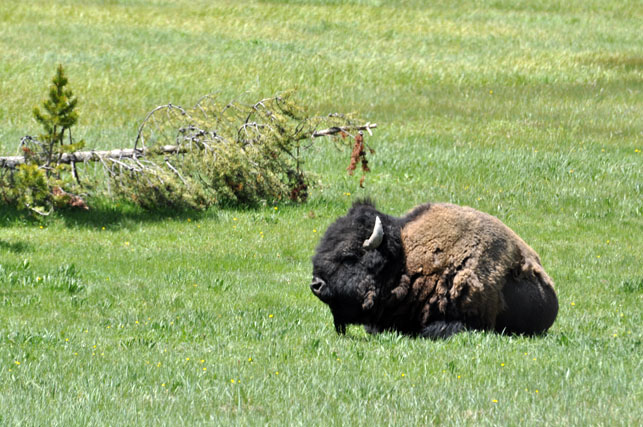
I think a new photographer is at work here - several of these pages when we put them up on
FB were a combination of Bobbie's work and mine.
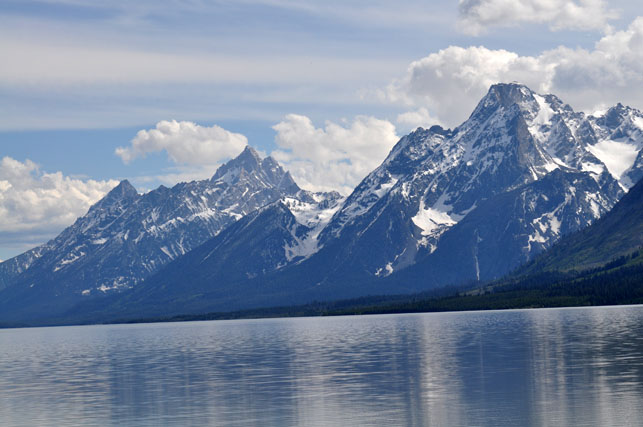
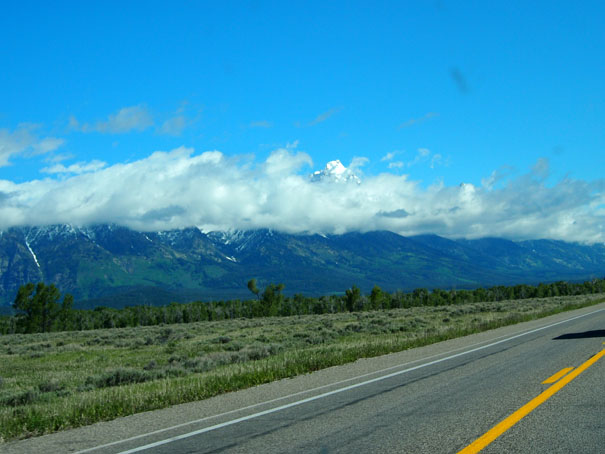
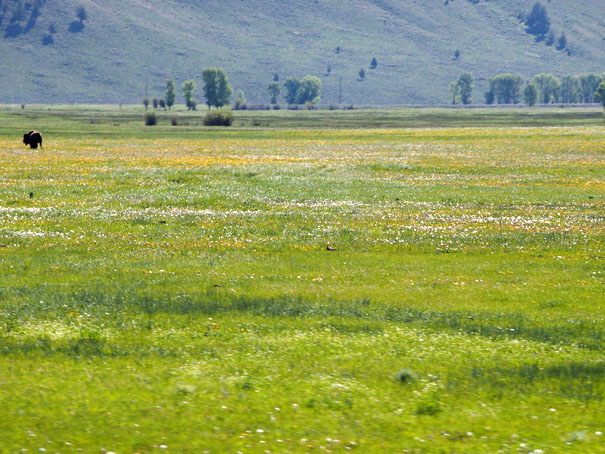
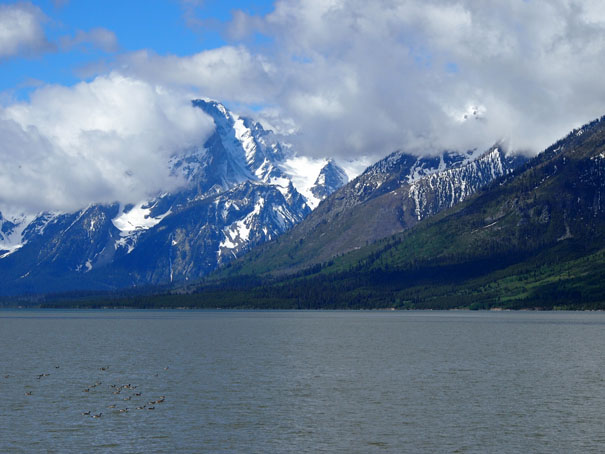

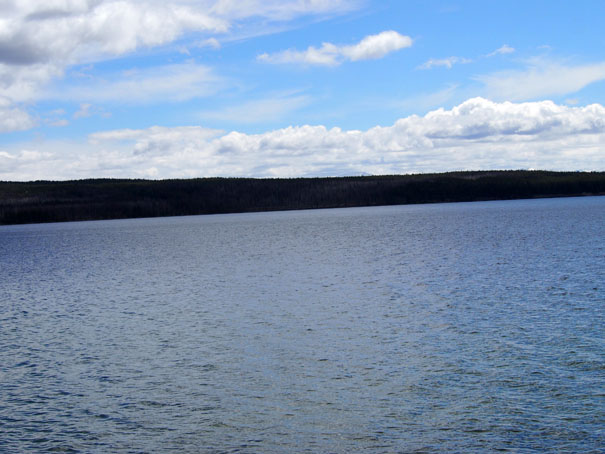
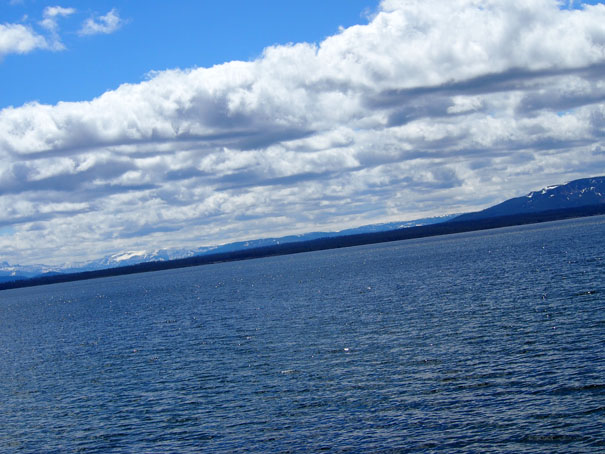
We are now in Yellowstone encountering our Elk.
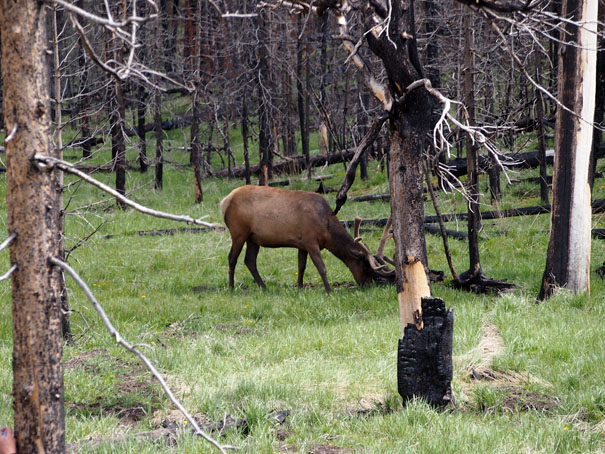

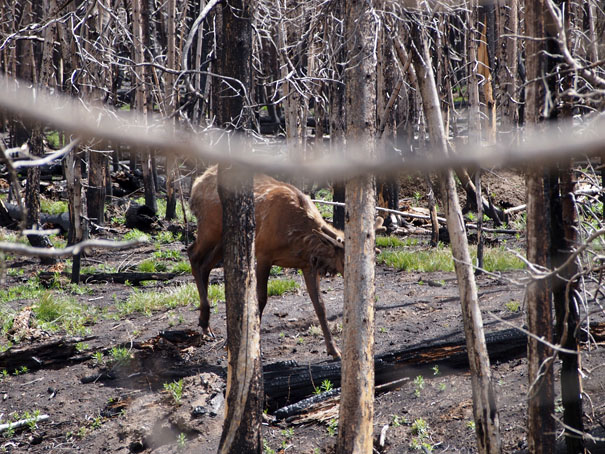
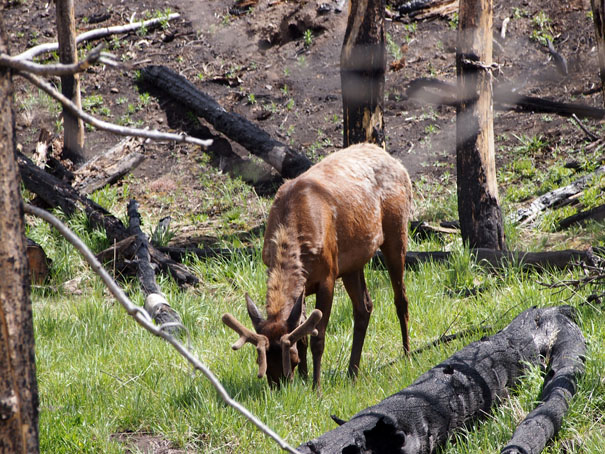
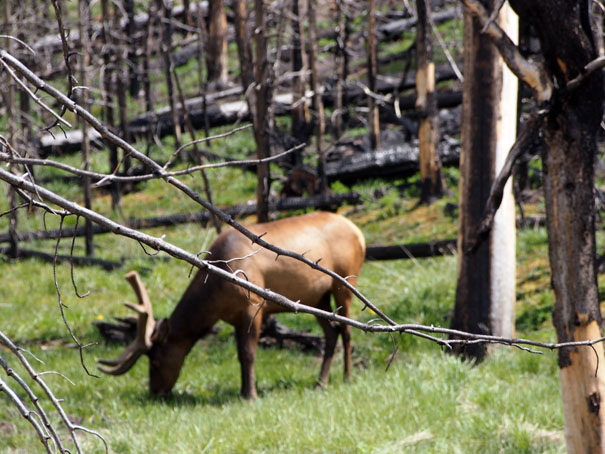

Dead Timber and New Life near the Elk Sighting
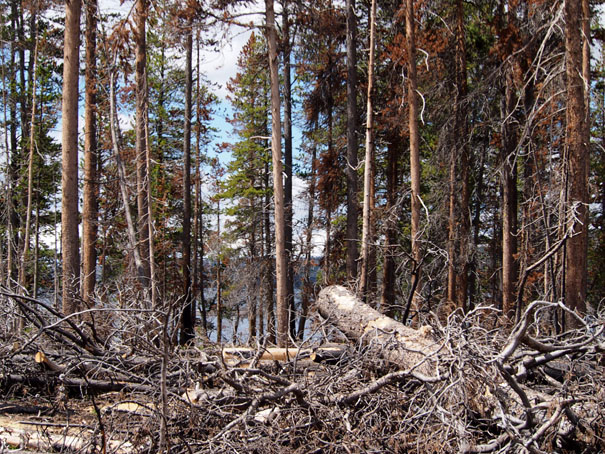
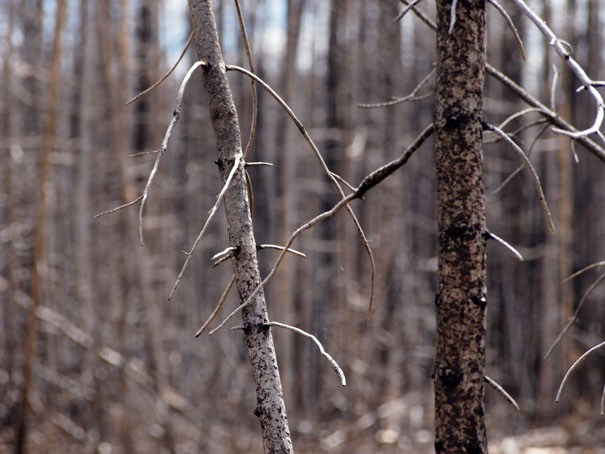
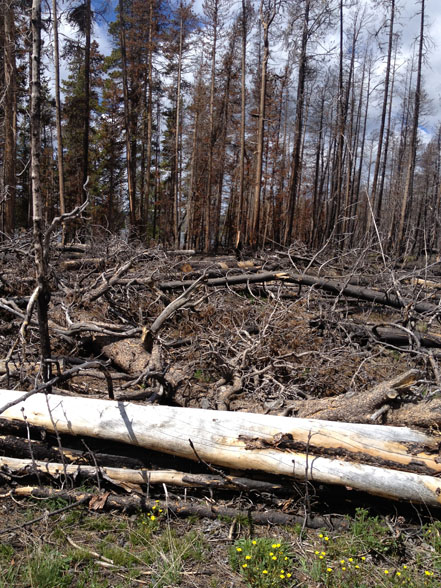
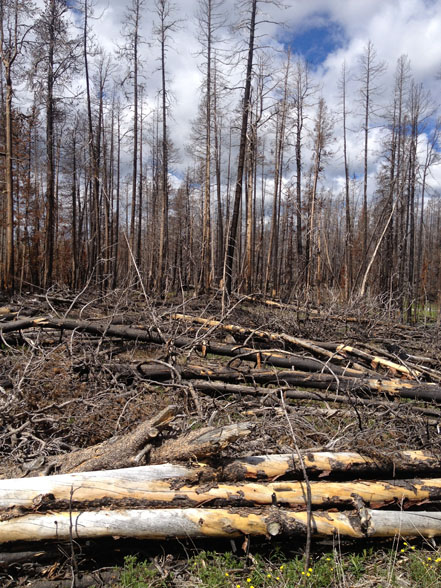
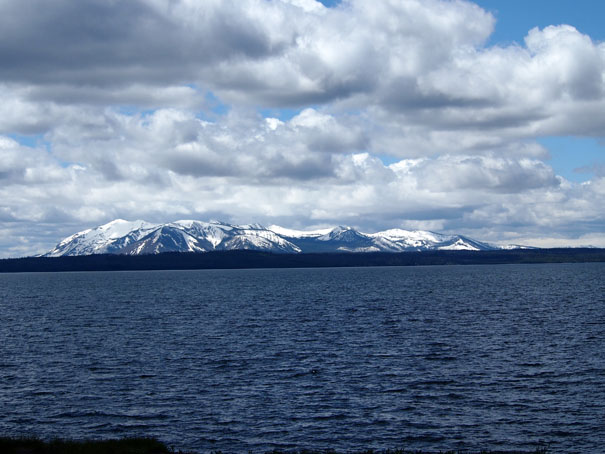
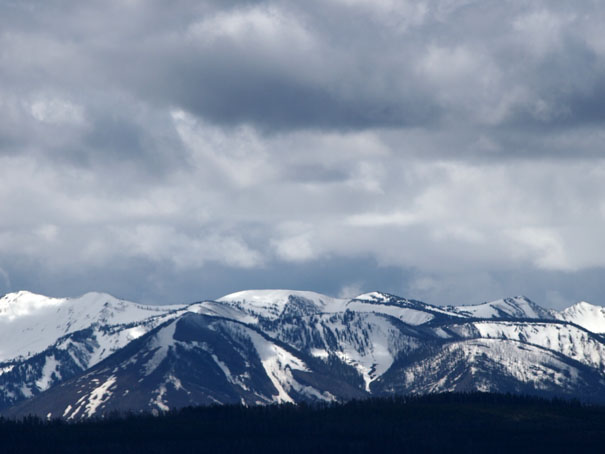

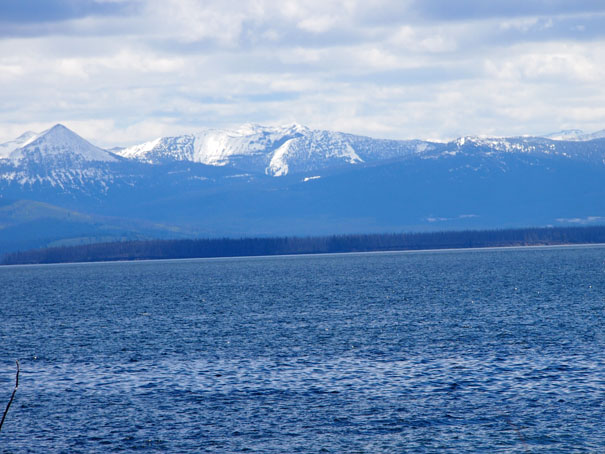
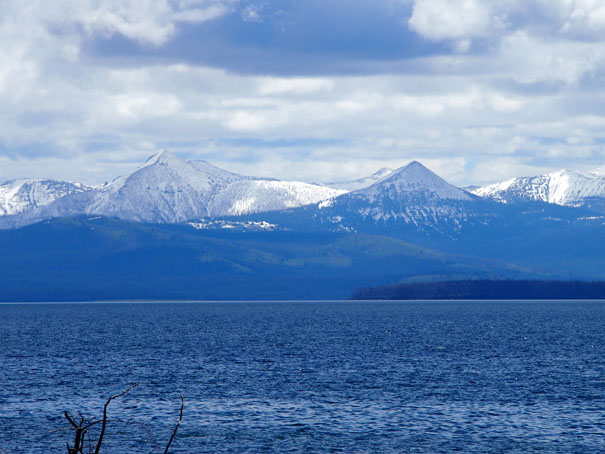

Yellowstone's "Mud Volcano"
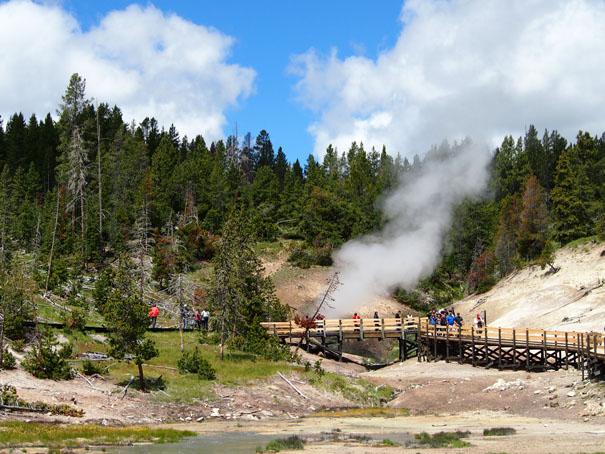

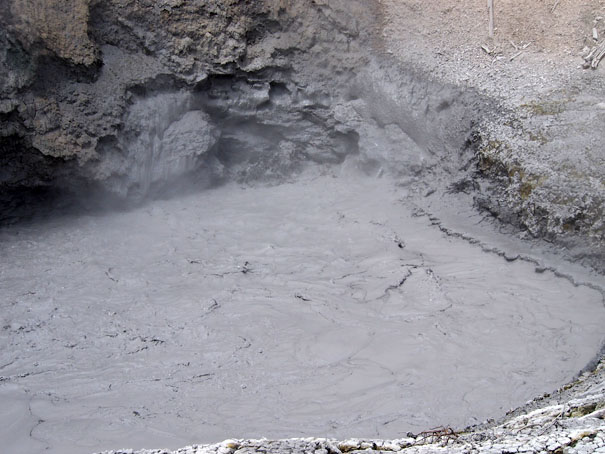
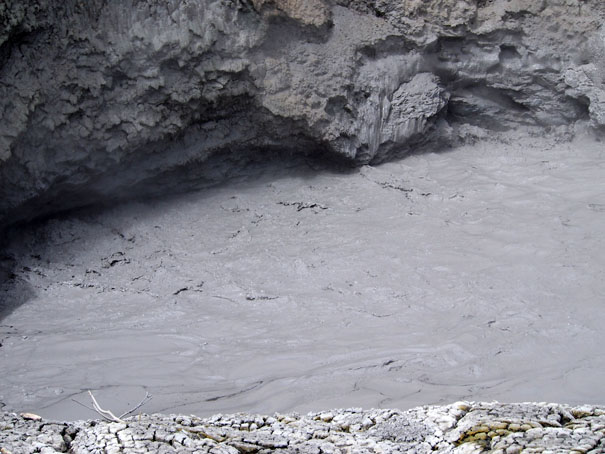

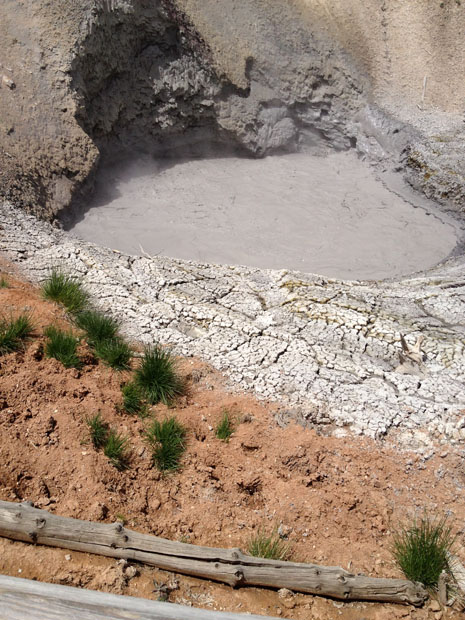
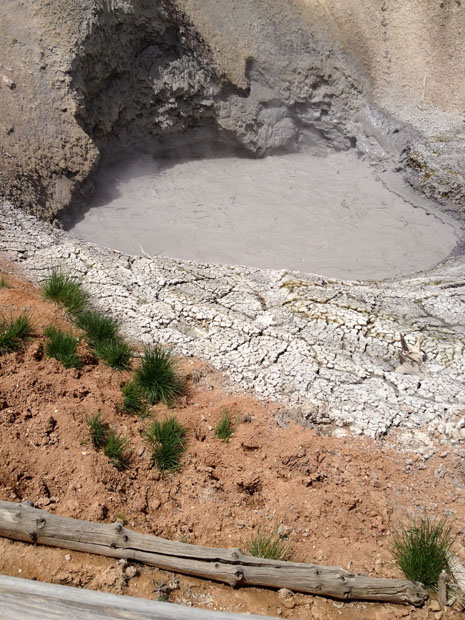
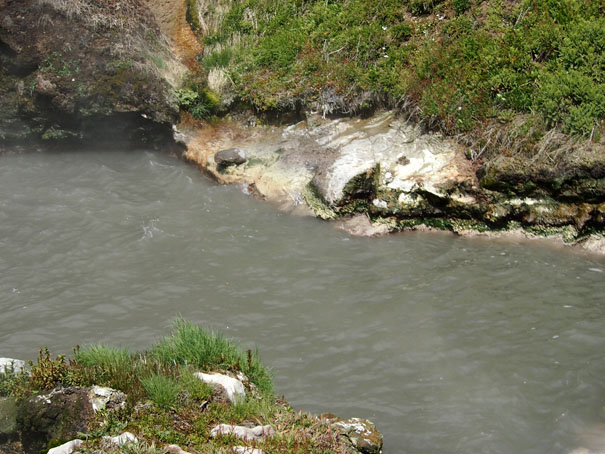
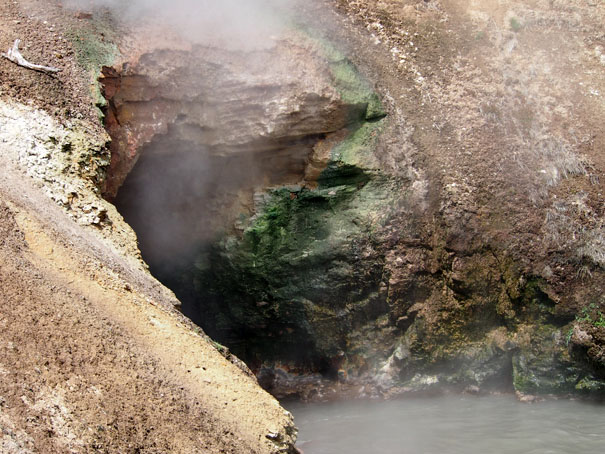
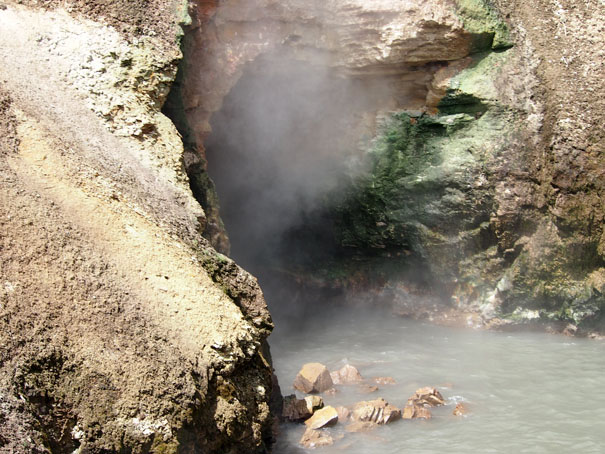
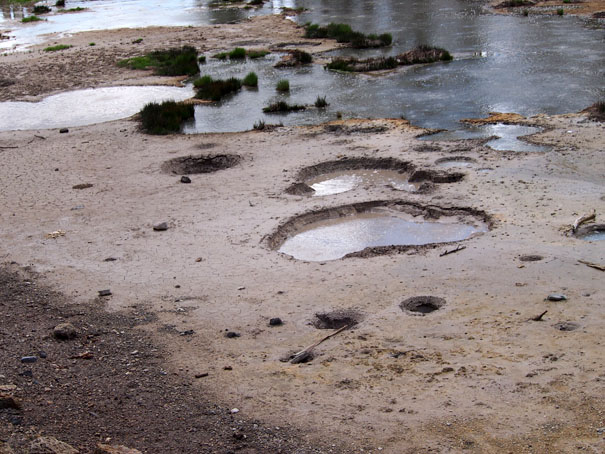



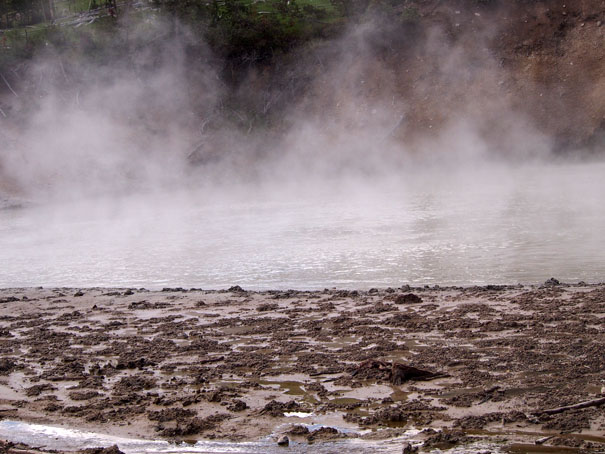
The Yellowstone River
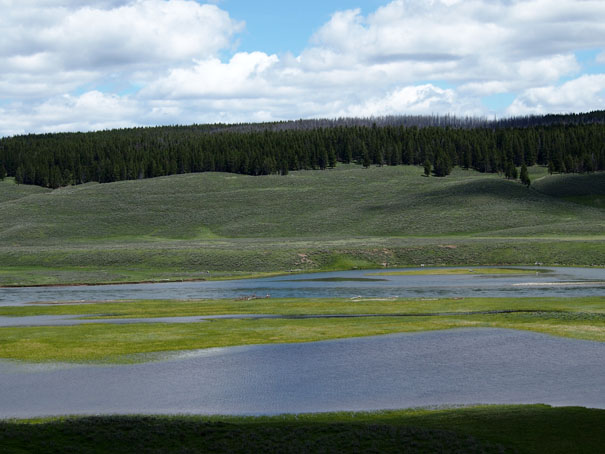

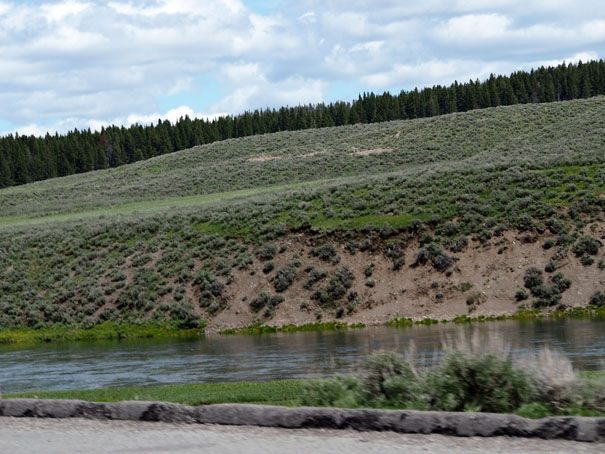
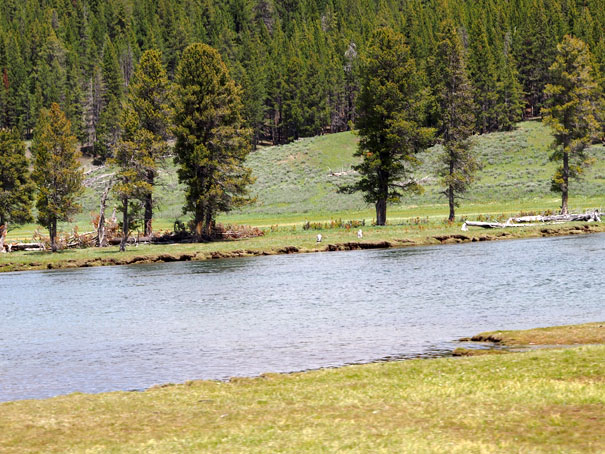
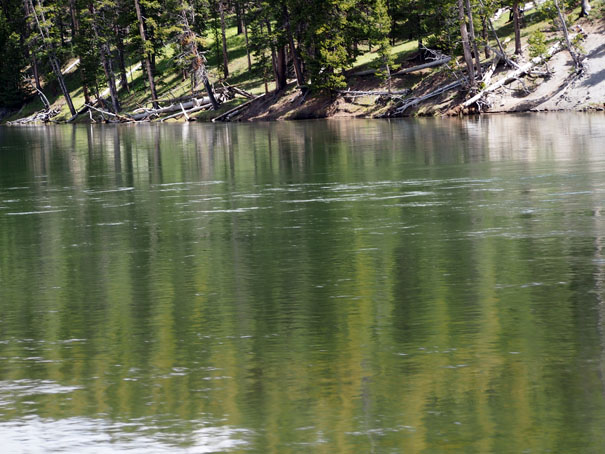
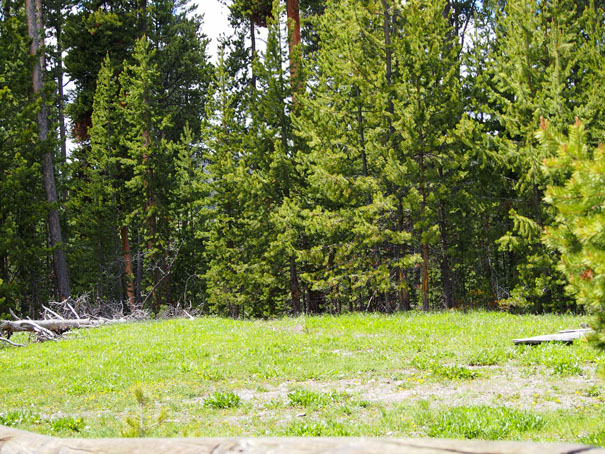
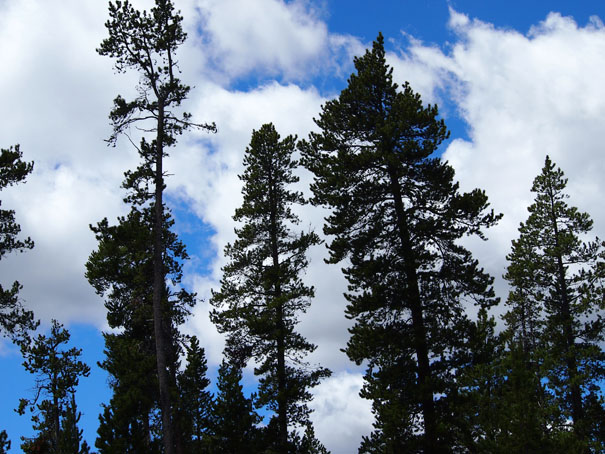
The Grand Canyon of the Yellowstone

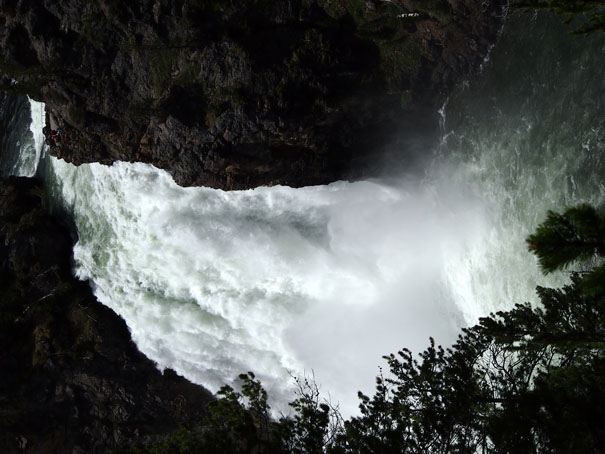
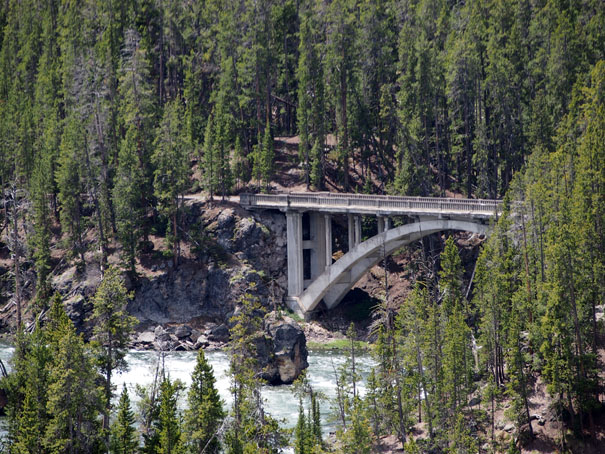
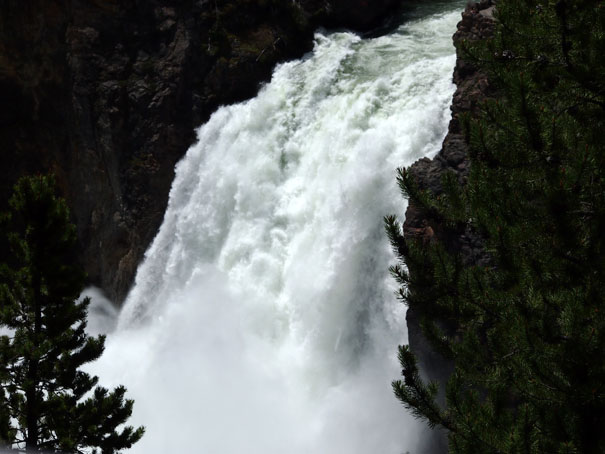
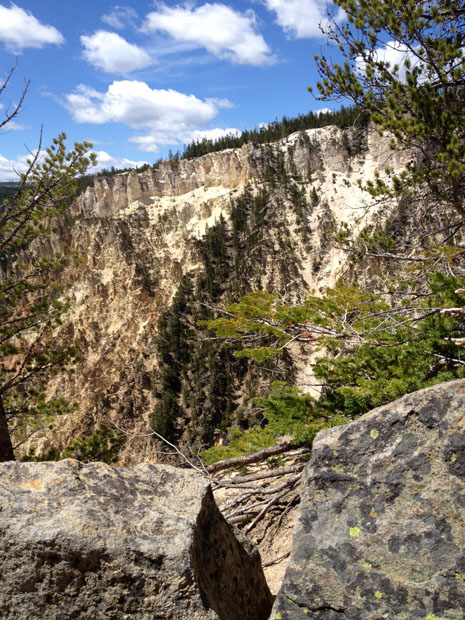
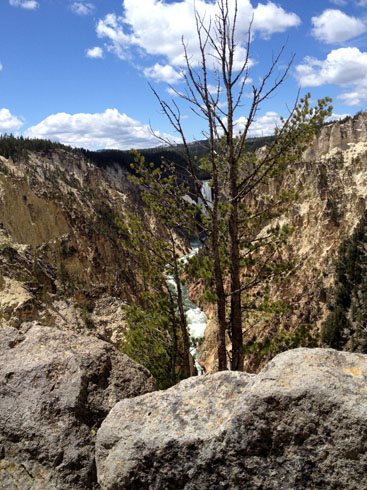
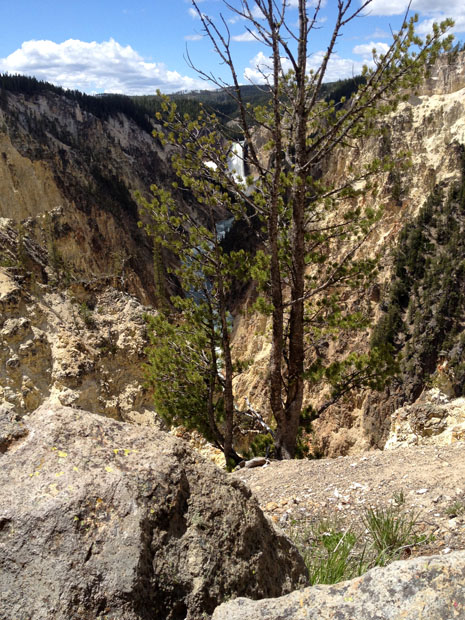
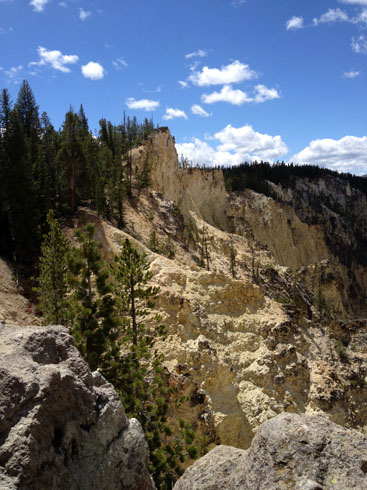



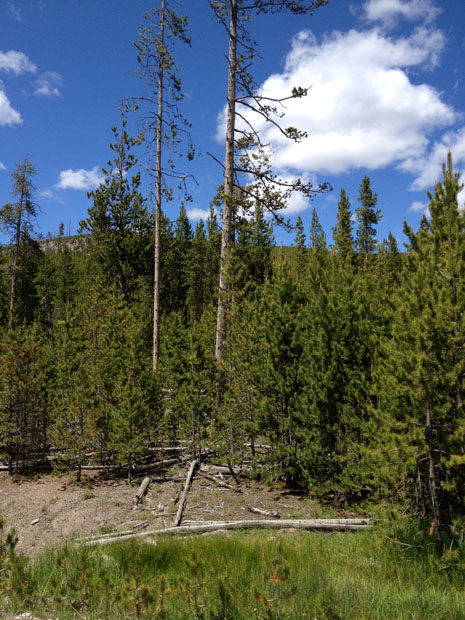
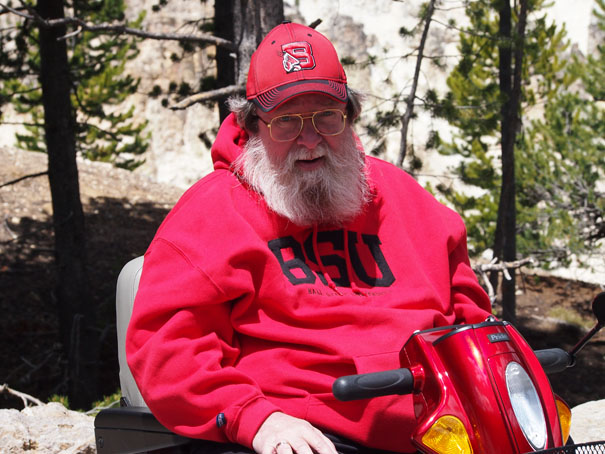
Bruce
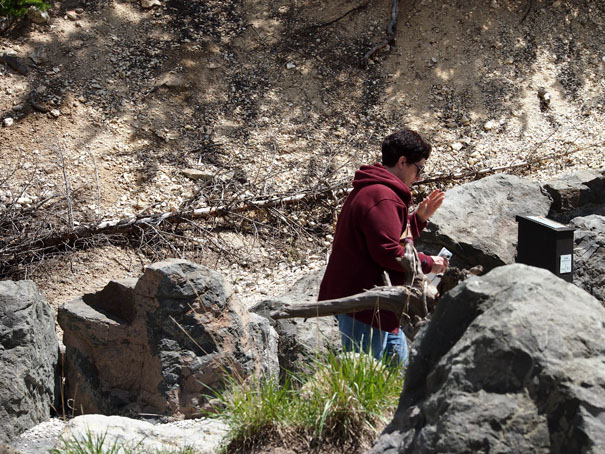
Janie

Janie
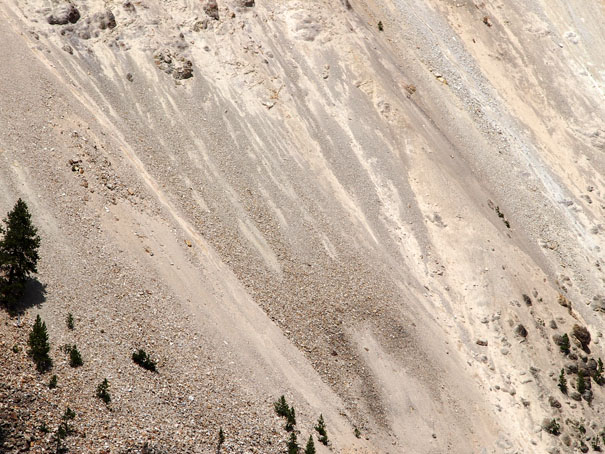
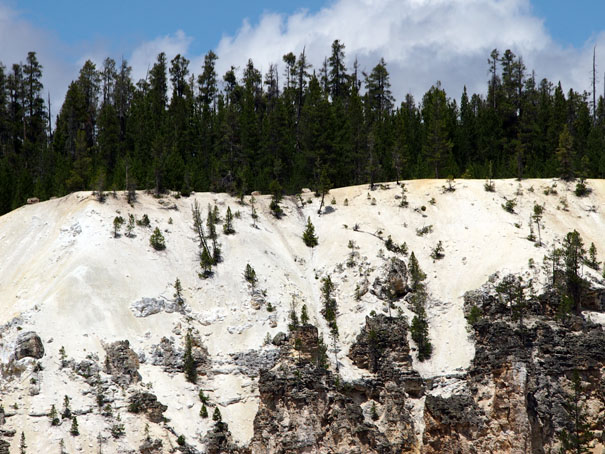
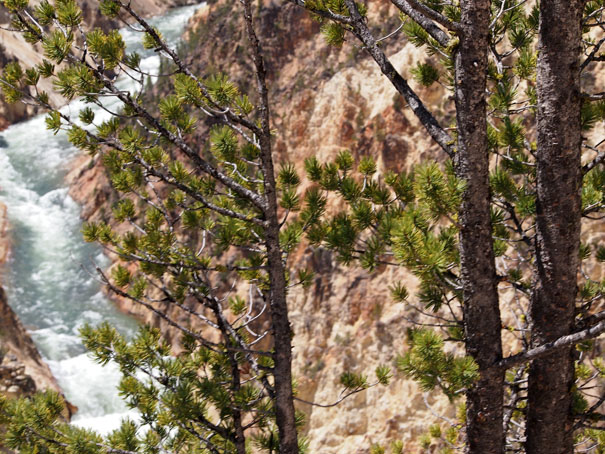
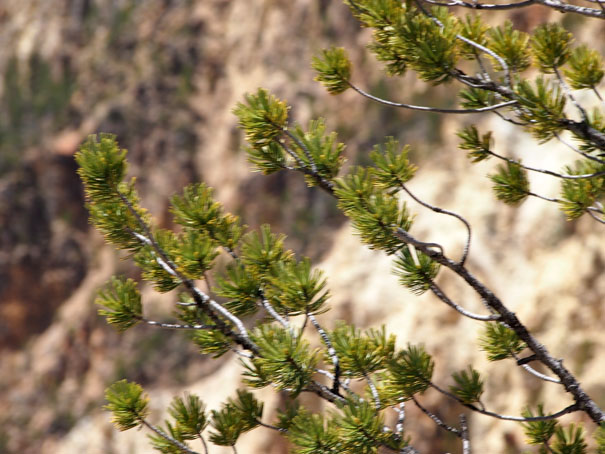
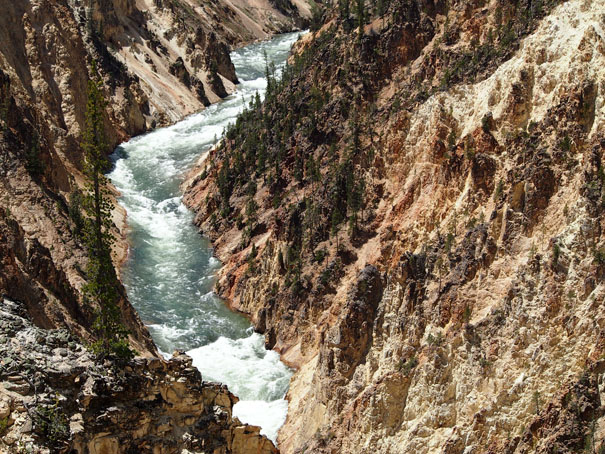
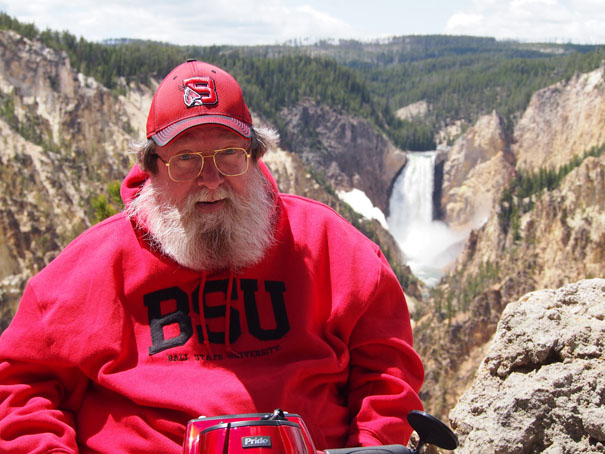
Bruce
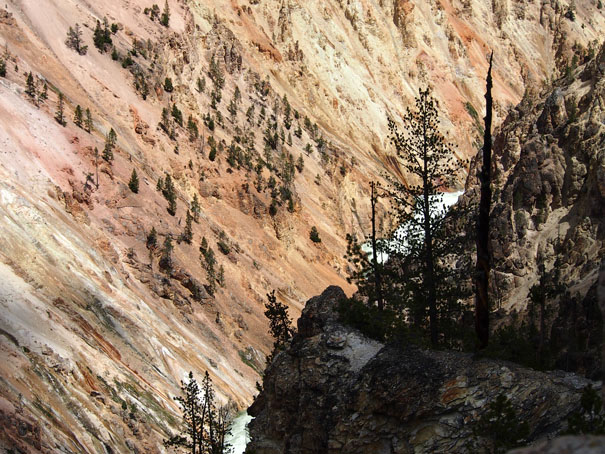
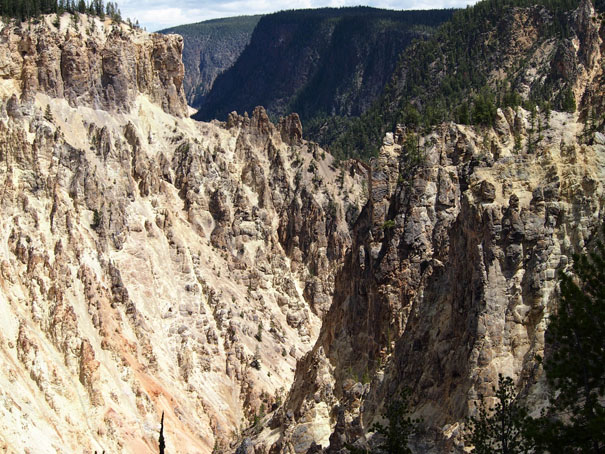
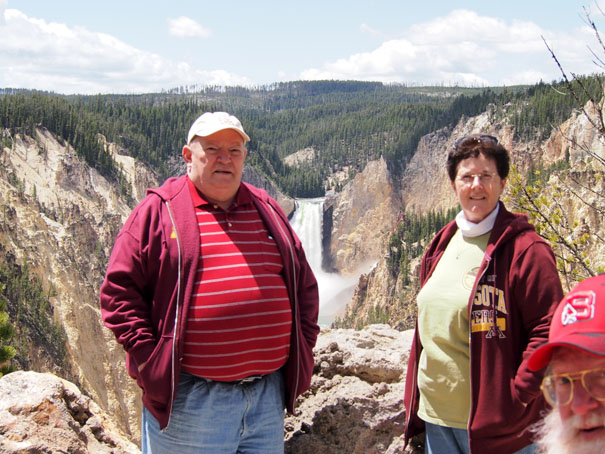
Dave and Janie
Someone is trying to sneak into their picture.
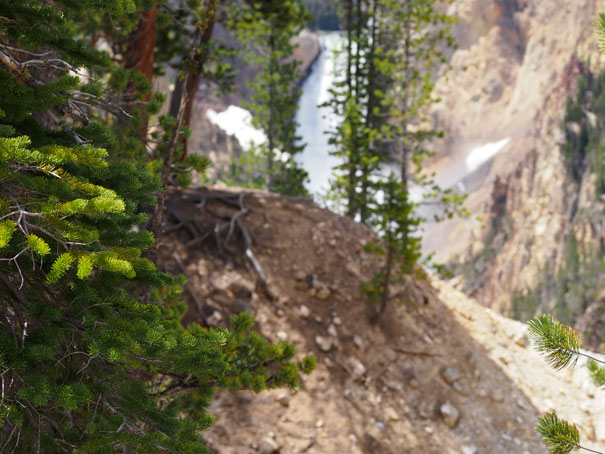

Bruce, Janie, and David
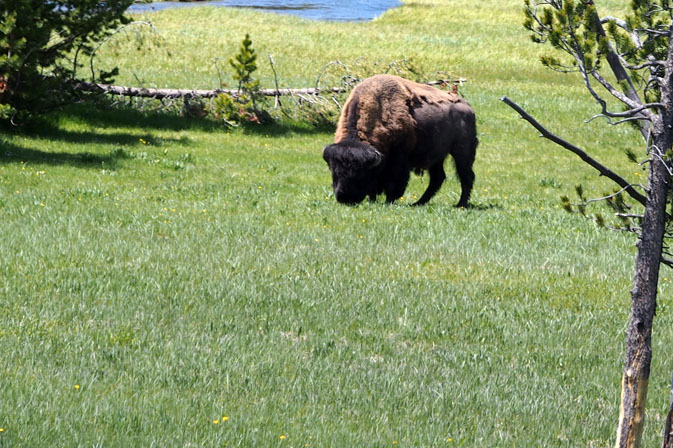
Heading Back to the Visitor Center at Old Faithful
I needed the Family Restroom - Oh, What can I say.
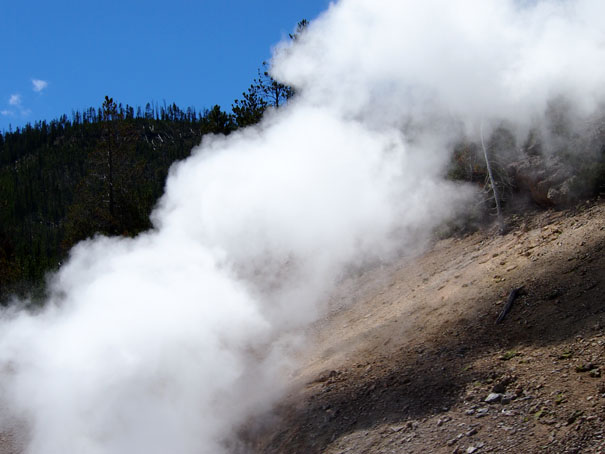
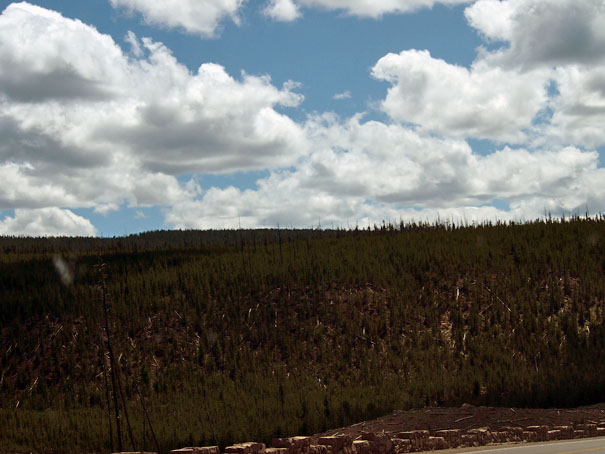
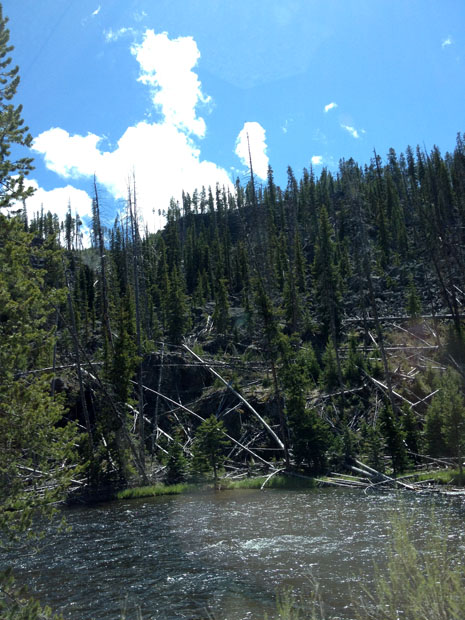

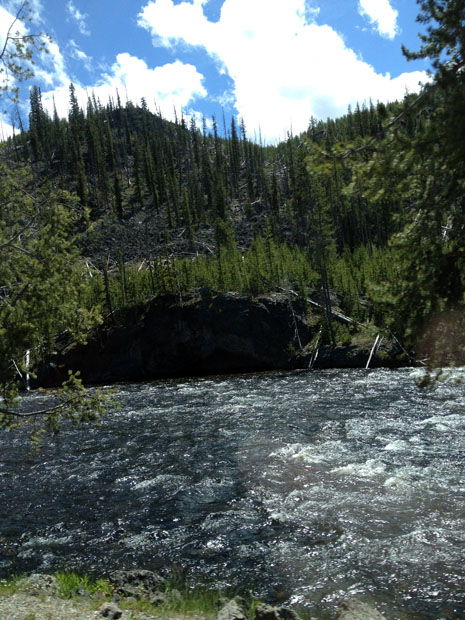

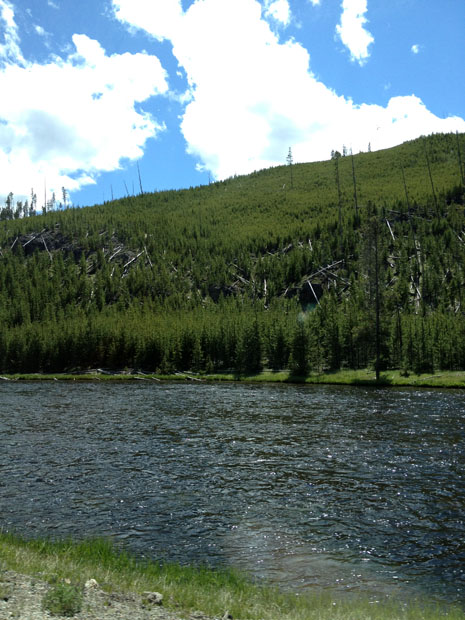
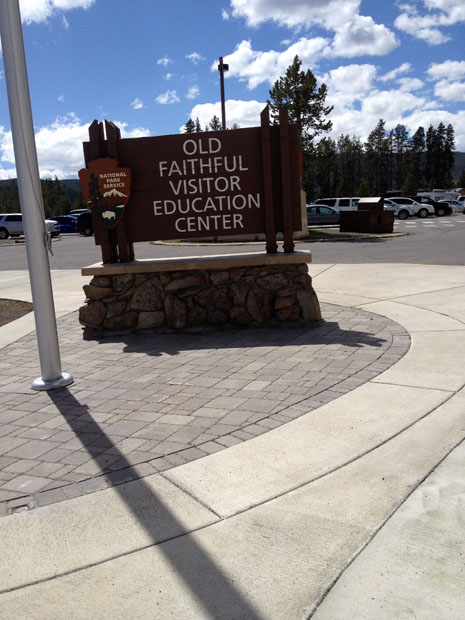
Heading Back to Lake Jackson as well as Jackson Hole
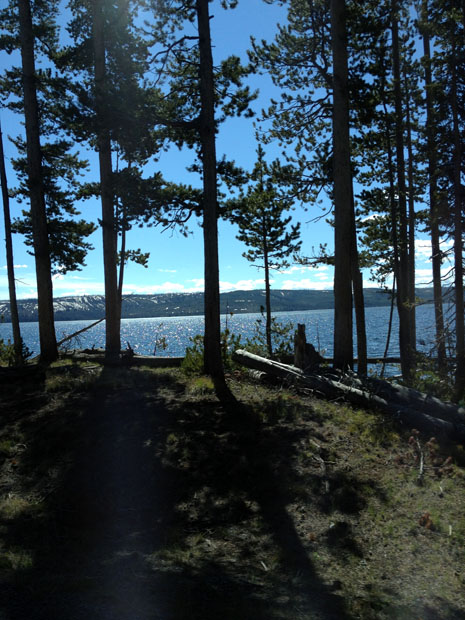


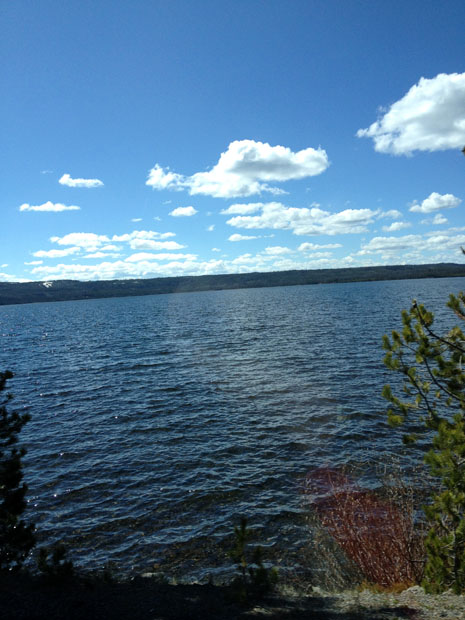

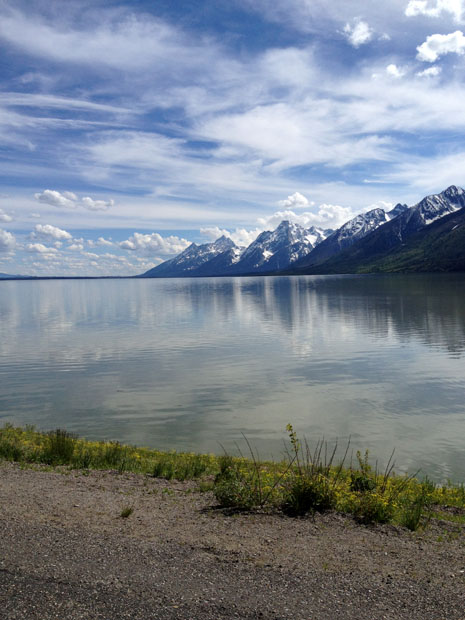
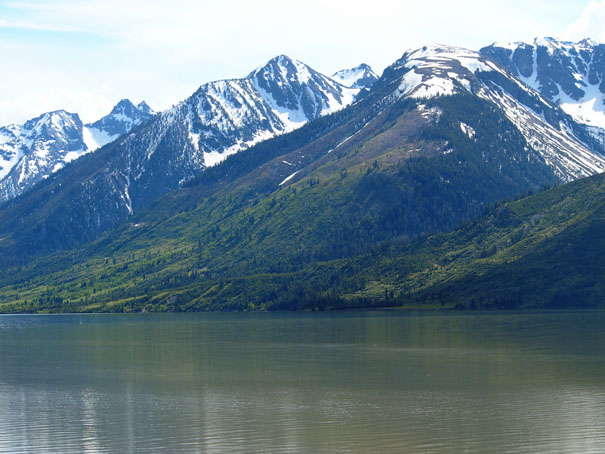
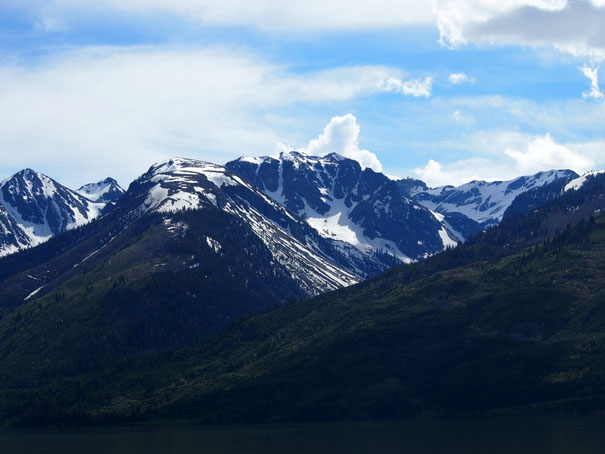
Return to Bruce and Bobbie's Main Page.